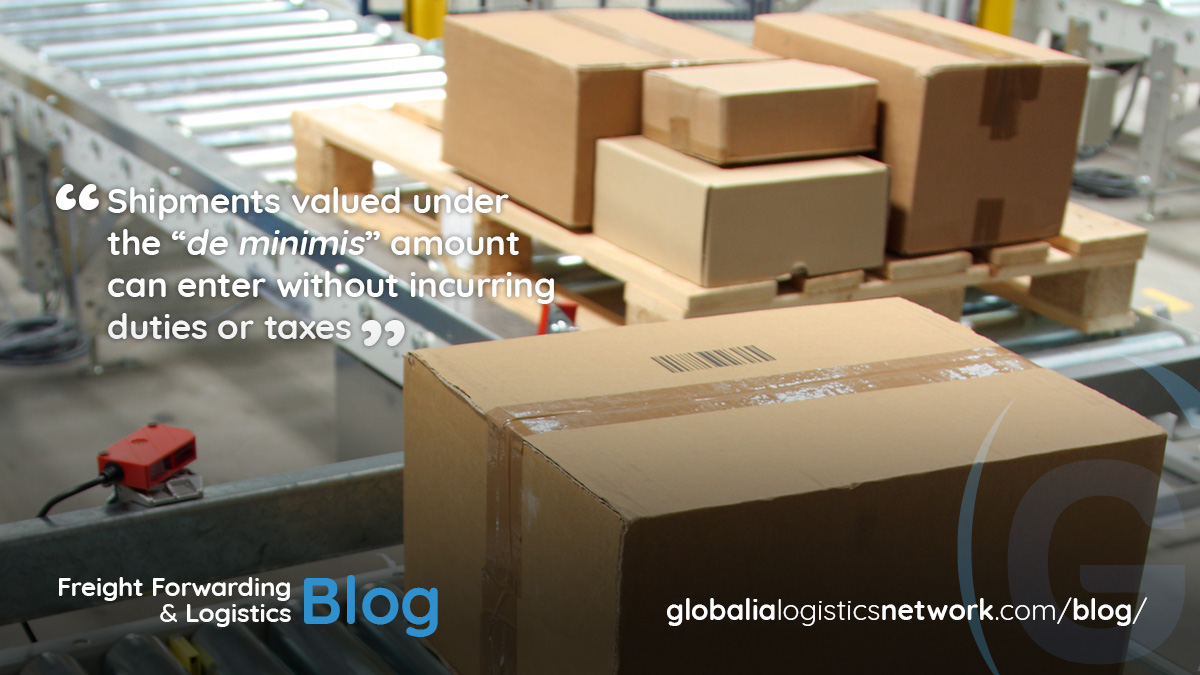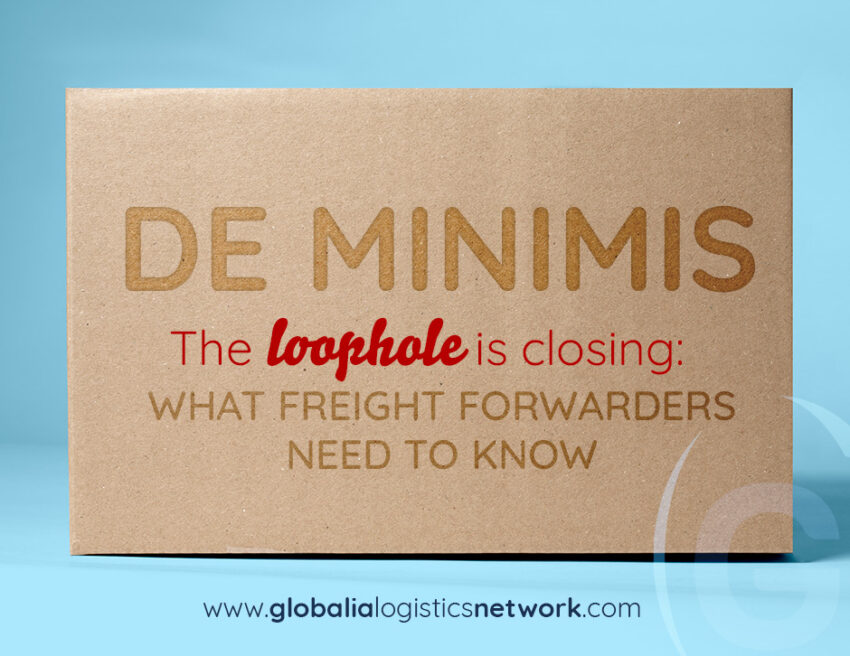The U.S. government is gearing up to shut the door on a long-debated policy that has significantly shaped the landscape of global e-commerce logistics: the de minimis loophole. This exemption, which has allowed low-value shipments to enter the U.S. without paying duties or undergoing rigorous customs procedures, is officially ending for certain shippers as of May 2, 2025. For freight forwarders handling B2C and cross-border e-commerce, this is more than just a regulatory footnote—it’s a seismic shift that demands strategic adaptation.
Understanding the De Minimis Rule
Currently, the U.S. de minimis threshold stands at $800, meaning that shipments valued under this amount can enter the country without incurring duties or taxes. Introduced with the aim of speeding up customs clearance and promoting small-scale international trade, it was widely welcomed by e-commerce sellers, especially from low-cost manufacturing countries like China. Freight forwarders, particularly those managing last-mile delivery or working with express carriers, have leveraged this rule to move high volumes of small parcels quickly.

Why the De Minimis Loophole Is Under Scrutiny
However, critics have long argued that the rule has been exploited by ultra-fast fashion retailers and high-volume e-commerce giants, especially those shipping directly from overseas warehouses. Companies like Shein, Temu, and AliExpress have reportedly routed tens of thousands of small, duty-free packages daily into the U.S., sidestepping import taxes that American retailers and manufacturers are otherwise subjected to. This not only creates an uneven playing field but also contributes to a complex logistics burden—especially when it comes to tracking, compliance, and consumer transparency.
Now, with bipartisan political pressure and increasing concern over trade imbalances, U.S. Customs and Border Protection (CBP) has announced new guidelines that will exclude certain entities from taking advantage of the de minimis threshold altogether. For freight forwarders, particularly those managing international parcels and coordinating customs brokerage for e-commerce clients, this regulatory pivot could be a game changer.
How the Policy Shift Impacts Freight Forwarders
The most immediate impact will be felt by forwarders handling small parcel shipments under Section 321. Many freight forwarding companies have built their service models around this class of entry—managing bulk shipments split into thousands of “de minimis” parcels, often sent via air freight to minimize transit time. The upcoming policy change will not only affect how these shipments are handled but also who can benefit from the simplified entry.
For example, if your client is a high-volume e-commerce brand exporting from Asia into the U.S., they may no longer be eligible for Section 321 clearance. That means shipments that once cleared seamlessly may now require formal customs entry, payment of duties, and potentially longer clearance times—especially if CBP targets them for inspection. Freight forwarders need to prepare for increased documentation, reclassification of goods, and perhaps most importantly, adjusted shipping timelines and cost structures.
This will also impact how freight forwarders price their services. If you’ve been operating on thin margins based on the volume and speed of de minimis shipments, expect a major rethink. Forwarders might have to invest in new customs compliance software, more detailed client education, and even warehouse space to consolidate or repackage goods in ways that meet new CBP standards.
Increased Customs Scrutiny and Compliance Pressure
CBP is expected to ramp up enforcement and auditing for entities that previously relied heavily on Section 321 filings. This means freight forwarders will likely shoulder a higher degree of liability in terms of ensuring accurate product declarations, HTS code assignments, and valuation documentation. Errors or inconsistencies can delay clearance, lead to fines, or worse—blacklist your client from future de minimis eligibility.
Additionally, CBP may deploy data-driven risk assessment tools to identify abuse of the system, putting forwarders under greater surveillance. Those using bonded warehouses, foreign trade zones (FTZs), or Section 321 Type 86 entries need to review all procedures to make sure they are aligned with the new compliance environment.
Freight forwarders must be proactive in helping their clients shift toward legitimate import models. For instance, some clients may need to register with CBP, obtain Importer of Record (IOR) numbers, and start paying duties that were previously avoided. This presents both a challenge and an opportunity: forwarders who can assist with this transition will become invaluable partners, rather than just service providers.
Opportunity for Value-Added Services
While the new policy shift may initially disrupt operations, it also opens the door for freight forwarders to diversify and upscale their service offerings. Now is the time to invest in customs brokerage, landed cost calculation tools, and real-time shipment visibility platforms. Clients will need end-to-end support—ranging from tariff classification and tax compliance to automated documentation and delivery optimization.
There’s also potential to expand warehouse and fulfillment services. As smaller e-commerce players shift away from direct-to-consumer cross-border shipping, they may look to establish U.S.-based inventory storage for faster domestic distribution. Freight forwarders with 3PL or contract logistics capabilities can capitalize on this by offering storage, pick-and-pack, and last-mile delivery services within the U.S.
Additionally, freight forwarders can develop strategic partnerships with domestic carriers, ensuring that even with new compliance hurdles, clients continue to benefit from efficient supply chains. The end of de minimis for certain players doesn’t mean the end of e-commerce—it simply means adapting to a new model of compliant, value-driven international logistics.
Global Ramifications and What to Watch For
Although the change is U.S.-specific, it sends a clear message globally: the era of loophole-driven logistics is closing, and countries are reasserting control over their import processes. This could set a precedent for other nations to reevaluate their own de minimis thresholds or compliance frameworks, especially as e-commerce volumes continue to surge post-pandemic.
For freight forwarders managing multi-country operations, it’s essential to monitor how other regions respond. The European Union, for example, already ended its VAT exemption for low-value imports in 2021. If Canada or Australia follows suit, the industry could face a wave of regulatory tightening that reshapes the entire e-commerce logistics landscape.
Furthermore, expect increased dialogue around digital customs solutions, trade facilitation through data standardization, and integration of AI in cargo screening. Forwarders that stay ahead of these trends by investing in compliance tech and strategic consulting will not only survive this transition—but thrive in it.
Forwarders Must Evolve or Risk Obsolescence
The closure of the de minimis loophole marks a pivotal moment for U.S.-bound freight forwarding. While it introduces friction into the once-frictionless world of e-commerce logistics, it also highlights the evolving role of the freight forwarder: no longer just a mover of goods, but a critical supply chain advisor, compliance expert, and value creator.
Freight forwarders who react swiftly—by educating their clients, upgrading their systems, and diversifying their services—will gain a competitive edge in a rapidly transforming market. Those who ignore the change may find themselves outpaced by more agile, compliance-ready competitors.
Now more than ever, knowledge, adaptability, and proactive communication will define success in the new freight forwarding era.


